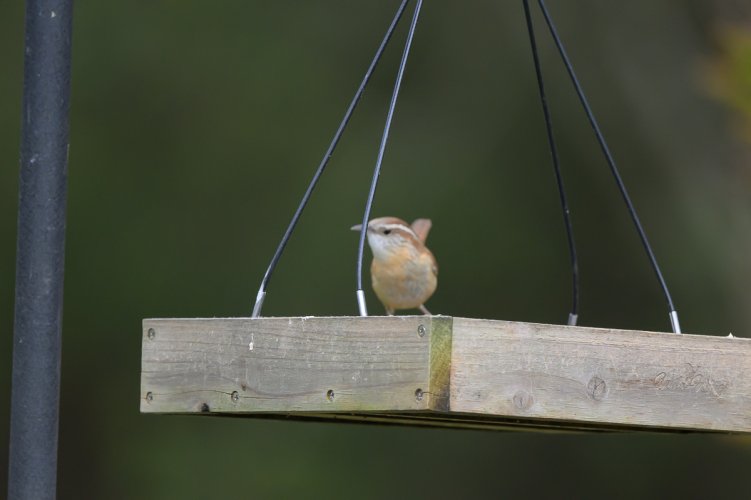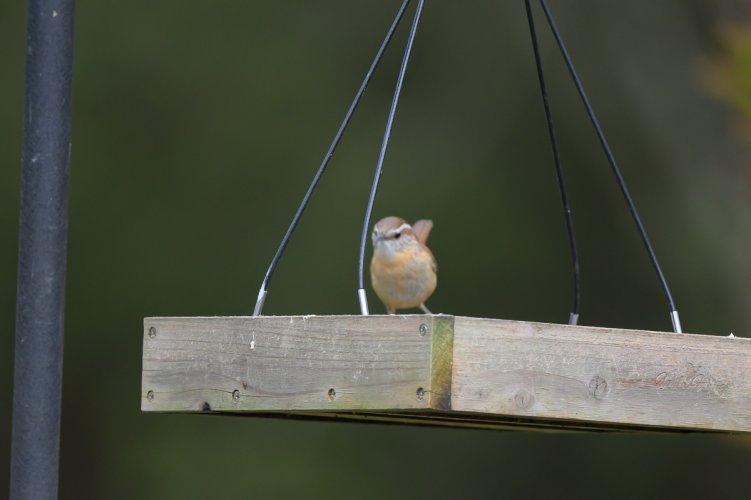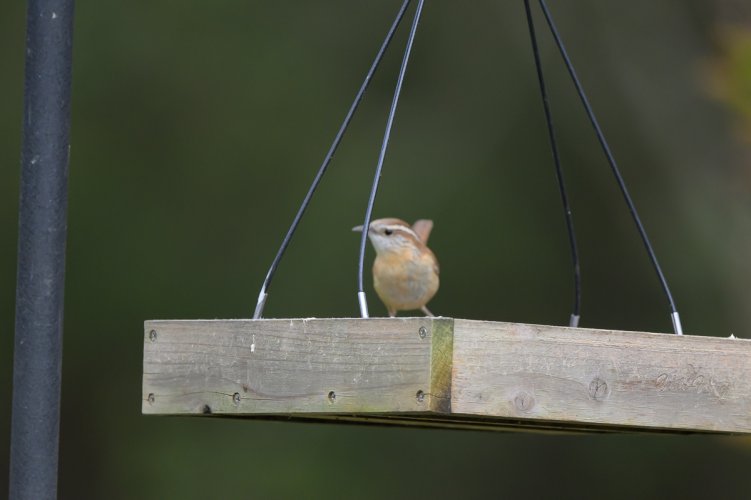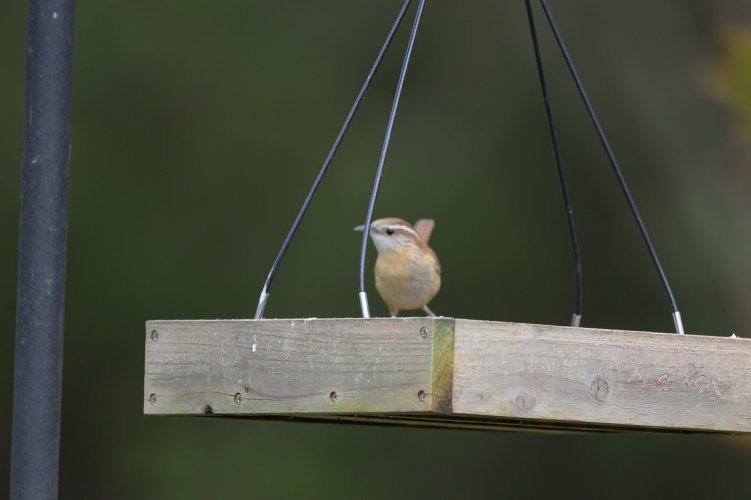I would also disable the manual focus ring. I find I move it when hand holding the 600pf.
You are using an out of date browser. It may not display this or other websites correctly.
You should upgrade or use an alternative browser.
You should upgrade or use an alternative browser.
z8/z9 Focus Issues
- Thread starter Pat Cassity
- Start date
If you would like to post, you'll need to register. Note that if you have a BCG store account, you'll need a new, separate account here (we keep the two sites separate for security purposes).
Cameron T
Well-known member
This is probably true, with csp in the wide area modes.i'm almost positive what happened in your current image is af picked up the wire.
John Navitsky
Well-known member
is this cropped? note for these static shots you may wish to have vr set to "on".
ajrmd
Well-known member
Something clearly isn’t right and like Jerry and John suggested, you might be accidentally hitting the MF ring while you are holding the lens. To diagnose what is going on, place the lens on a tripod and aim it at a fixed as well as mobile targets. Both of my Z8’s AF like lightning with high degrees of precision 92-95% accuracy in a wide array of applications.
Here are all 4 of the shots in the burst. All at Wide-S Bird detection. I insured that the entire Wide-s box did not include any of the straps and didnt press the shutter until the eye detected box turned green.Do all shots in that burst show the same degree of being out of focus?
Attachments
Last edited:
This is exactly why i was using c1 at 1 x 1 mode for the original image i posted. To insure objects close the subject weren't being included.This is probably true, with csp in the wide area modes.
John Navitsky
Well-known member
fwiw, not that it helps, but both the shots you shared look to be tricky shots considering the small subject size, obstructions, long focal length and hand held
AF can sometimes focus on something outside the focus box. The bird is so close to (and behind) the wire that I suspect the wire was the true point of focus, not the bird. I’ve had that happen with the 70-200, 100-400, and 400 f/4.5 Z lenses. That’s an issue with how AF works, I don’t think it’s a problem with the lens.Here are all 4 of the shots in the burst. All at Wide-S Bird detection. I insured that the entire Wide-s box did not include any of the straps and didnt press the shutter until the eye detected box turned green.
Thanks for your help John and to everyone else that contributed. I just noticed that when shooting with the 600PF my finger was resting squarely on the focus ring. That so easy could have been the issue. Instead of turning it off, I have reversed the role of the focus ring and the control ring. Give it a try this afternoon and see if it helps.fwiw, not that it helps, but both the shots you shared look to be tricky shots considering the small subject size, obstructions, long focal length and hand held
John Navitsky
Well-known member
one thing i've done is set the color of my focus peaking to blue. i find this makes it glaringly obvious to me that i've accidentally nudged the af ring.Thanks for your help John and to everyone else that contributed. I just noticed that when shooting with the 600PF my finger was resting squarely on the focus ring. That so easy could have been the issue. Instead of turning it off, I have reversed the role of the focus ring and the control ring. Give it a try this afternoon and see if it helps.
i'm not particularly clearly why changing the color made a big difference for me, but it did
Oldnintheway
Well-known member
Just want to say that you're not alone with this. I get similar results on occasion with my Z8/180-600. I'm going to keep an eye on the focus ring as a possible culprit. I do have focus peaking on/red , and I have noticed how easy it is to activate inadvertantly with a touch.Thanks for your help John and to everyone else that contributed. I just noticed that when shooting with the 600PF my finger was resting squarely on the focus ring. That so easy could have been the issue. Instead of turning it off, I have reversed the role of the focus ring and the control ring. Give it a try this afternoon and see if it helps.
Alistair
Well-known member
I have seen this happen myself. False positive. I am assuming you have subject detection on with some form of wide area. The camera sees the eye but there is something in front of the eye (cable in this case) and the camera focused on the closest thing under the focus point. This is one scenario where 3d with SD actually works better.Here are all 4 of the shots in the burst. All at Wide-S Bird detection. I insured that the entire Wide-s box did not include any of the straps and didnt press the shutter until the eye detected box turned green.
WRT the eagle image, I don't know what is going on there. Should be no prroblem. My guess is your grip is not steady enough, SD should work better here and keep the AF point over the subject for you.
ajrmd
Well-known member
I use blue too and selected that color because it is unusual for the vast majority of my images and it is distinctly visible. My 800 seems to be an offender especially if I am reaching for the control ring.one thing i've done is set the color of my focus peaking to blue. i find this makes it glaringly obvious to me that i've accidentally nudged the af ring.
i'm not particularly clearly why changing the color made a big difference for me, but it did
I am a bird ID photographer and shoot birds of all size in a wide range of terrain and habitat sitting, hopping, flying and running all hand held.Thanks for your help John and to everyone else that contributed. I just noticed that when shooting with the 600PF my finger was resting squarely on the focus ring. That so easy could have been the issue. Instead of turning it off, I have reversed the role of the focus ring and the control ring. Give it a try this afternoon and see if it helps.
Accidental movement of focus ring is just one of the reasons I shoot target rifle style with the lens foot resting in the palm of my hand I do not grip the foot. Primary birding set up is Z9 and Z800. My support hand fingers are not touching the lens unless I want them to. I use the control ring for EV and the focus ring for manul focus over ride. I am always in VR on sport. I do not use BBF and have not for years. I use subject tracking bird (used to be animal) I have shutter release set to wide area custom 5x3, AF-ON button set to 3D+AFon, FN1 set to wide area custom 1x1 + AFon, FN2 set to Auto Area AF + AFon. I have posted a lot more details in other posts including images of birds taken through heavy cover.
Someone mentioned atmospheric distortion which can happen in a wide range of temperatures when shoot at long range makes images look soft. Are you getting soft images on simple bird or other subject shot at closer distances without any obstructions?
From your images I think there is no clear evidence that the problems arises from defective equipment, though this might be so.
In the first image there is a small area of black feathers with the feathers in flat light lacking contrast.
AF needs contrast to work well, and there is very little contrast.
In the second image the bird is very small in the frame, there is more contrast on a larger subject in front of the bird, and that is where AF focussed.
Ideally a medium size subject in the frame, with good contrast parallel to the short dimension of the frame, is needed when using an AF mode where subject detection is disabled to help identify a possible equipment problem.
In the first image there is a small area of black feathers with the feathers in flat light lacking contrast.
AF needs contrast to work well, and there is very little contrast.
In the second image the bird is very small in the frame, there is more contrast on a larger subject in front of the bird, and that is where AF focussed.
Ideally a medium size subject in the frame, with good contrast parallel to the short dimension of the frame, is needed when using an AF mode where subject detection is disabled to help identify a possible equipment problem.
macwalter
Active member
Definitely I have that happen often I find the AF can lie at times so I like to take several bursts refocusing each timei'm almost positive what happened in your current image is af picked up the wire.
Mark1776
New member
I have found that head on shots of birds that are distant can be difficult for the subject detection to get a correct focus. As soon as the bird turns to the side, the shots tend to sharpen remarkably. I see the detection box going through the process of body, head, but not making it to eye reliably until there is a side profile of the eye. I am shooting small birds at distance, and so do not have a very large image. The DX crop mode helps with that somewhat, seeming to improve focus a bit.
If they are far enough away the focus on the body or the head will have what you can see of the eye in focus even with a Z800 at f/6.3 so essentially at the infinity point.I have found that head on shots of birds that are distant can be difficult for the subject detection to get a correct focus. As soon as the bird turns to the side, the shots tend to sharpen remarkably. I see the detection box going through the process of body, head, but not making it to eye reliably until there is a side profile of the eye. I am shooting small birds at distance, and so do not have a very large image. The DX crop mode helps with that somewhat, seeming to improve focus a bit.
Your comment on a bird ideally needing to be in profile rather than head on is helpful, particularly for those going through the learning stages of getting used to subject detection auto focus.I have found that head on shots of birds that are distant can be difficult for the subject detection to get a correct focus. As soon as the bird turns to the side, the shots tend to sharpen remarkably. I see the detection box going through the process of body, head, but not making it to eye reliably until there is a side profile of the eye. I am shooting small birds at distance, and so do not have a very large image. The DX crop mode helps with that somewhat, seeming to improve focus a bit.
This does not mean that AF cannot AF a head-on bird profile - only that birds in profile can be more easily detected by an appropriate subject detection setting.
The limited detail provided by Nikon shows a bird in profile (not head on) for AF subject detection.
Digressing slightly subject detection is hopefully still in relative infancy. There may be a time when subject detection can detect birds, animals, aircraft, motorcyclist, cars, et cetera, very tiny in the frame from any direction – including maybe even from behind
tomcat
New member
I think you are correct. It seems that the base of the wire (silver connector) on the extreme left is in pretty good focus. Otherwise, I cannot imagine what could be causing this. In thinking about this again, I am very suspicious of the contrast here. It seems that the head-on shot of the bird is not a very good contrast between the background, breast, or wings and the camera is having a difficult time with a lack of sharp contrast. Not having a sufficient contrast is mentioned in every Nikon Owner's manual since the 1970's. There just doesn't seem to be much difference between the bird's beak/head and the surroundingsi'm almost positive what happened in your current image is af picked up the wire.
Calson
Well-known member
The advantage of eye detection is that the camera focuses on the subject's eyes. With DSLR cameras the focus would usually lock onto the closet object in the frame and so I needed to use manual focus override most of the time with small subjects.
What I quickly appreciated was seeing all the early images posted using the Z9 to photograph subjects in brush and the camera's ability to focus on the eyes and ignore everything else in the frame.
What I quickly appreciated was seeing all the early images posted using the Z9 to photograph subjects in brush and the camera's ability to focus on the eyes and ignore everything else in the frame.
You can only see EXIF info for this image if you are logged in.
You can only see EXIF info for this image if you are logged in.
I am a bird ID photographer 90% of the time.I am on Z9 FW 5.0 now but at least since FW 4.0 have seldom had to turn subject tracking off. I use a Z800 pf 99% of the time for bird ID photography. I photograph in all sorts of conditions and terrain, all hand held I use shutter button half press primary focus.
I also go to DX from FX when the subject it small and distant and use EV on lens control ring on my Z8 to get proper exposure as needed.
Here are a couple of just ID shots I posted elsewhere as examples of subject detection bird on with wide area custom 1x1 used shooting through leaves, branches etc..
And just in case you find it useful these are the basic settings I use.
I shoot manual with auto ISO and AF-C.
I have a7 focus point persistence on auto to help facilitate hand off from one AF Area mode to another. I have animal subject detection on.
I have my buttons for AF-Area Mode and AF set to:
Shutter half press wide-area AF C1 sized to 5x3.
AF/ON button to AFArea mode 3D + AF-ON
Fn1 button to AFArea mode wide-area C2 sized to 1x1+ AF-ON
Fn2 button to AFArea mode to AF Area Mode + AF-ON
tomcat
New member
Great shots Ken. I would say you are a fellow photographer that knows his craft! Thanks for sharing
Thank you they work fine for Bird ID ... a whole different genre than planned bird photography been there done that but rarely do anymore ... to much fun hunting birds with my camera for citizen scienceGreat shots Ken. I would say you are a fellow photographer that knows his craft! Thanks for sharing





